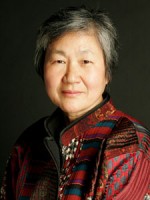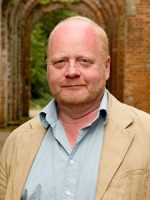Title
Playing new music can require jumping into new territory. To begin with, it often puts “classical” musicians into the unaccustomed position of having to confront a composer whose attitude cannot be predicted. Then there are practical matters: unaccustomed rhythms and difficulties of tuning unusual chords, sometimes including microtones. Coaxing new sounds—or sounds new to the players—out of the instruments. Those squeaks and squeals of wind instruments, so reviled by teachers, are now called multiphonics and can be used very effectively. Strings players sometimes have to be bludgeoned into playing a proper ponticello. Pianists discover that the location of the correct string to pluck or mute changes with piano manufacturers. Percussionists sometimes have to build new instruments, such as the “rulerphone” recently constructed by Jacob Nissly for a concert in the Museum of Modern Art’s Summergarden series. (A rulerphone consists of a pair of wooden rulers attached to a resonant box. The rulers are twanged and amplified by the box.)
Body
My most troublesome experience concerned a piece by the Argentinean-German composer Mauricio Kagel, which needed a foghorn. Boating stores were no help; current models don’t sound remotely like those foghorns that conjure up the magic of the sea, the smell of salt water, great journeys. My daughter, who at the time was a tall-ship sailor, believed that an antique hand-cranked horn could be found at the South Street Seaport Museum and connected me with a captain based there. Unfortunately the existence of the horn was a persistent but unfounded rumor. When I asked the captain about renting one from a tugboat company active in New York Harbor whose tugboats have wonderful foghorns, he informed me that such horns require a compressor the size of a small truck, and can only be discharged once every three minutes or so. Besides, he added, they are meant to be heard from 25 miles away. Did I really want to bring such a sound to an audience? The solution was to get a sound file.
This subject of challenges arose with respect to the November 20 N.J.E. concert, which needs a soprano and a mezzo-soprano for a piece by the New York composer Daniel Bernard Roumain, and a tenor for a piece by Toivo Tulev. Tulev, an Estonian, was recommended to me by Arvo Part, and understandably, for he shares Part’s religious sensibilities. The tenor needs to sing like a monk chanting—a feat requiring an intensity and a restraint for which not many singers of traditional repertory are celebrated. Roumain’s Grace, a hip-hop fantasy on the song “Amazing Grace,” needs singers with a pop flair—again, not the usual background for “classical” singers. Fortunately Brian Zeger, the artistic director of the Vocal Arts Department, knows his crew well and solved the problems beautifully. Alex Mansoori will be our monk-like tenor, and the hip-hop artists will be soprano Tharanga Goonetilleke and mezzo-soprano Rebecca Loeb.
Of course, the skills that N.J.E. players have to develop do not just involve unusual sounds. Rhythm is often a challenge, though much less so than 20 or 30 years ago. Still, not everyone can switch accurately from dividing two beats into six parts to dividing two beats into five parts. In the September 29 concert, however, that skill was required of the entire wind and brass section in Roberto Sierra’s Güell Concert—and seven players had to produce that transformation simultaneously. Twenty years ago that measure could have taken a chunk of time out of a rehearsal; now it went by with almost no trouble. The modern challenge is executing salsa rhythms convincingly—which requires a really secure internal pulse that the rhythms can bounce off. In Sierra’s piece, the problem fell especially heavily into the lap of pianist Jacek Mysinski. We were really amazed by how Jacek, a Polish classical pianist, gradually turned himself into a convincing Hispanic pop artist!
Jacek’s progress was observed by the entire first-year drama class. As in 2006, the Drama Division asked to bring the incoming students to a New Juilliard Ensemble rehearsal to see how musicians operate. Last year they came early in the rehearsal process and witnessed some heavy-duty slogging at details. This year they attended the final rehearsal of Güell Concert and David Rakowski’s Locking Horns, a horn concerto with Tianxia Wu as soloist. By that time most of the details were settled, but the salsa problems were not quite behind us, and David Rakowski had come to see how his concerto was coming along. As it happened, we had extra time for the drama students to engage with the players and the composer. The following Monday I met with the drama students and was deeply impressed by their ability to formulate questions about the most fundamental processes of music performance.
The November 20 program will include, in addition to the Roumain and Tulev pieces, a premiere by May 2007 graduate Ryan Gallagher, the first of two pieces commissioned after last year’s audition process for Juilliard composition students to write for the N.J.E. There will be Western Hemisphere premieres of compositions by Younghi Pagh-Paan, a Korean composer who lives in Germany and is one of the most prominent and most unusual of the growing ranks of Asian women composers, and John Woolrich, an Englishman of wonderfully quirky instincts.









